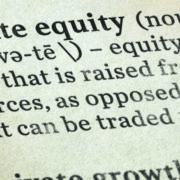How to Make an M&A Conference Worth Your Time
“An expert is a man who has made all the mistakes which can be made, in a very narrow field.” (Niels Bohr)
It’s no secret that one of the many channels for sourcing investment opportunities is to attend the M&A conferences that pepper the calendar throughout the year. The fact that these events are well attended is a double-edged sword. On the one hand, you can usually set up a lot of relevant meetings, but on the other, your competition is trying to do the exact same thing. So, after reflecting on lessons learned for generating an ROI from the time and cost of the trip, I thought it was worth crystalizing the ideas below:
- Identify & Emphasize High Priority Meetings. By this point, you should be able to quantitatively define the highest priority relationships to your firm across major metro areas. There are many ways to do this in a data-driven manner, but the answers should reside in your CRM and be readily retrievable in an automated report. Using your version of this report, identify any “must have” meetings at the conference – if those groups are not participating or you are current in your communications with them, then a reasonable conclusion is to not attend the event. Your time is too valuable to waste on unnecessary travel. The strategy of throwing on a blazer and indiscriminately shaking hands with as many people as possible at an M&A conference is over.
- Request Meetings Early. Goes without saying, but the sooner you request meetings, the higher the likelihood of getting those meetings on the books. The standard you should aim for is submitting meeting requests the same day that the attendee list is published. In a market this competitive, the implied value of a meeting is higher than it has ever been, so procrastinating will only serve to limit your effectiveness. And, I recommend having the senior-most attendee of the conference send out the meeting requests themselves – a seemingly minor point, but all things being equal, the other party is more likely to agree to a meeting when you put in the extra effort. I’ve always been more impressed with senior-level attention than someone’s ability to delegate tasks to junior team members.
- Prepare for Each Meeting. You are only going to get 20 minutes or so per meeting, so you better make each minute count. You should already be up to speed on the vital stats of each firm and person with whom you are meeting, so don’t waste time with the “commercial”. You should go into every meeting with a game plan for maximizing the effectiveness of the discussion. Presuming you are using a CRM to track your interactions with firm relationships, print out the necessary pages that highlight prior interactions and recent deals. Moreover, make sure you are current on the specifics of any recent interactions to create continuity in the discussion. Nobody likes it when you forget the details of prior conversations, so use notes from past conversations to create a seamless transition to your meeting.
- Don’t Try to “Catch Someone at the Cocktail Reception”. A common response when someone’s calendar is full is that you should just try to connect at one of the group gatherings. This is an ineffective and annoying suggestion for at least four reasons. First, it’s predicated on the assumption that both of you will actually attend these events which is not always the case. Second, if you both do attend, then it requires you to essentially read name badges (if provided) until you fortuitously happen to come across the person in question. Third, the setting will not be conducive to productive conversation as it will usually transpire after a long day of speed dating when a person’s head will be spinning from a dozen or so other discussions and they are not especially interested in maintaining the level of focus required for the exchange to bear fruit. Fourth, if the person was truly interested in meeting, then they should have suggested a specific time / place to meet or proposed a call after the event.
- Set up Meetings Off the Regular Schedule. It’s easy to get lost amongst the shuffle of the back-to-back 20- minute sessions, so an effective way to be memorable is to visit outside of the regular schedule of meetings. In other words, steer your higher priority meetings to coffee, drinks or meals when you can go longer form and have more meaningful interactions. I’ve found that once you’ve broken bread with someone, you can almost always count on a high level of responsiveness going forward.
- Take Notes, and Follow Up. Meetings without follow up might as well have never happened. If you don’t follow up, you are essentially assuming that the other person will follow up with you which is dangerous, because most people don’t. A simple trick is to take note of key action items on the back of a person’s business card so that you can use it as a reminder for when you get back to the office. Perhaps there was a point in life when I could have remembered everything I needed to do without writing it down, but those days are a distant memory. Second only to my laptop, my post-meeting stack of annotated business cards is the item about which I’m most concerned to bring home with me. So, whether it’s on business cards or another method, make sure you keep a record of what you said you would do so that you can be good to your word.
Having attended dozens of these events, I’ve definitely been on the wrong side of this advice before realizing the err of my ways. Hopefully some of these tips will enhance your effectiveness in wringing value out of the conference circuit. Happy networking to you all.
About ClearLight Partners
ClearLight is a private equity firm headquartered in Southern California that invests in established, profitable middle-market companies in a range of industry sectors. Investment candidates are typically generating between $4-15 million of EBITDA (or, Operating Profit) and are operating in industries with strong growth prospects. Since inception, ClearLight has raised $900 million in capital across three funds from a single limited partner. The ClearLight team has extensive operating and financial experience and a history of successfully partnering with owners and management teams to drive growth and create value. For more information, visit www.clearlightpartners.com.
Disclaimer: The views and opinions expressed in this blog are solely my own and do not necessarily reflect any ClearLight opinion, position, or policy.








